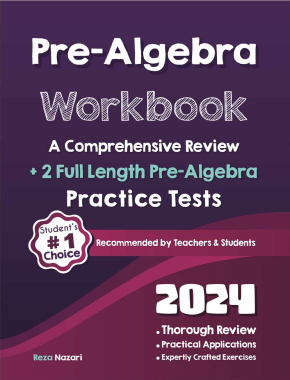Measuring Length Change: Definite Integrals in Continuous Growth Analysis
[include_netrun_products_block from-products="product/6-south-carolina-sc-ready-grade-3-math-practice-tests/" product-list-class="bundle-products float-left" product-item-class="float-left" product-item-image-container-class="p-0 float-left" product-item-image-container-size="col-2" product-item-image-container-custom-style="" product-item-container-size="" product-item-add-to-cart-class="btn-accent btn-purchase-ajax" product-item-button-custom-url="{{url}}/?ajax-add-to-cart={{id}}" product-item-button-custom-url-if-not-salable="{{productUrl}} product-item-container-class="" product-item-element-order="image,title,purchase,price" product-item-title-size="" product-item-title-wrapper-size="col-10" product-item-title-tag="h3" product-item-title-class="mt-0" product-item-title-wrapper-class="float-left pr-0" product-item-price-size="" product-item-purchase-size="" product-item-purchase-wrapper-size="" product-item-price-wrapper-class="pr-0 float-left" product-item-price-wrapper-size="col-10" product-item-read-more-text="" product-item-add-to-cart-text="" product-item-add-to-cart-custom-attribute="title='Purchase this book with single click'" product-item-thumbnail-size="290-380" show-details="false" show-excerpt="false" paginate="false" lazy-load="true"] [include_netrun_products_block from-products="product/6-south-carolina-sc-ready-grade-3-math-practice-tests/" product-list-class="bundle-products float-left" product-item-class="float-left" product-item-image-container-class="p-0 float-left" product-item-image-container-size="col-2" product-item-image-container-custom-style="" product-item-container-size="" product-item-add-to-cart-class="btn-accent btn-purchase-ajax" product-item-button-custom-url="{{url}}/?ajax-add-to-cart={{id}}" product-item-button-custom-url-if-not-salable="{{productUrl}} product-item-container-class="" product-item-element-order="image,title,purchase,price" product-item-title-size="" product-item-title-wrapper-size="col-10" product-item-title-tag="h3" product-item-title-class="mt-0" product-item-title-wrapper-class="float-left pr-0" product-item-price-size="" product-item-purchase-size="" product-item-purchase-wrapper-size="" product-item-price-wrapper-class="pr-0 float-left" product-item-price-wrapper-size="col-10" product-item-read-more-text="" product-item-add-to-cart-text="" product-item-add-to-cart-custom-attribute="title='Purchase this book with single click'" product-item-thumbnail-size="290-380" show-details="false" show-excerpt="false" paginate="false" lazy-load="true"]\([
\Delta L = \int_{a}^{b} \frac{dL}{dt}(t) \, dt
]\) For additional educational resources,.
This integral sums up the accumulated change across the interval, providing the net change in length. This method applies broadly in physics and engineering for analyzing growth, deformation, or any continuous transformation. For additional educational resources,.

To determine the total change in length over a specified interval, definite integrals are used to accumulate continuous growth or contraction. This approach is especially useful in physics and engineering when analyzing transformations such as material expansion, fluid flow, or other processes where length changes over time. For additional educational resources,.
Given a rate of change function \(\frac{dL}{dt}(t)\), which describes how length \(L\) varies over time, we can find the total length change, \(\Delta L\), by integrating this function over the interval from \(a\) to \(b\): For additional educational resources,.
\([
\Delta L = \int_{a}^{b} \frac{dL}{dt}(t) \, dt
] \) For additional educational resources,.
Here, \(\Delta L\) represents the net change in length across the interval \([a, b]\). This integral effectively sums the small changes in length \(\frac{dL}{dt}\) as they accumulate over time, capturing the overall transformation. This calculation is essential for accurately measuring continuous processes in various applications, from structural analysis to biological growth, by giving a precise total length change across any desired interval. For additional educational resources,.
Consider a metal rod that expands when heated. Suppose the rate of expansion of the rod’s length is given by \(\frac{dL}{dt}(t) = 2t\) centimeters per second, where (t) is in seconds. To find the total length change \(\Delta L\) over the time interval from \(t = 0\) to \(t = 5\) seconds, we integrate the rate of change function over this interval: For additional educational resources,.
\([
\Delta L = \int_{0}^{5} 2t \, dt
]\) For additional educational resources,.
Calculating the integral, we get: For additional educational resources,.
\([
\Delta L = \left[ t^2 \right]_{0}^{5} = 5^2 – 0^2 = 25 \, \text{cm}
]\) For additional educational resources,.
So, the rod’s total length increases by \(25\) cm over \(5\) seconds. This example illustrates how definite integrals help us accumulate continuous length changes over time, providing an accurate measurement of expansion. Such techniques are widely used in engineering for materials that expand or contract based on temperature changes, ensuring precise calculations in thermal applications. For additional educational resources,.
Frequently Asked Questions
How do I help my child prepare for the math test?
To help your child prepare for a math test, especially when dealing with topics like measuring changes in length using definite integrals, it’s important to provide them with resources that explain these concepts at an accessible level. Start by exploring concepts through interactive activities and Worksheets that focus on fundamental math skills and gradually introduce more complex topics. Additionally, consider enhancing their love for math with engaging materials found in the Top 10 Grade 3 Math Books Inspiring Young Mathematicians To Explore, which can make learning more enjoyable and effective. These resources will build a strong foundation and improve their confidence in handling various math problems.
What math skills should my 3rd grader know?
In third grade, students should be developing proficiency in basic arithmetic operations, including addition, subtraction, multiplication, and division. They should also begin to understand the concepts of fractions and measurements, which are fundamental for analyzing situations like the continuous growth in the example of measuring length change using definite integrals. Enhancing these skills can be supported by using engaging resources like those found in the Top 10 Grade 3 Math Books Inspiring Young Mathematicians To Explore. Additionally, practical application through Worksheets can reinforce their understanding and application of these math concepts.
How do you add and subtract mixed fractions?
To add or subtract mixed fractions, first, convert each mixed fraction into an improper fraction where the numerator is greater than the denominator. For example, convert 1 ¾ by multiplying the whole number (1) by the denominator (4) and adding the numerator (3) to get 7/4. After converting, add or subtract the fractions by finding a common denominator, and adjust the numerators accordingly. Simplify the result if necessary. This process, similar to the integration of growth rates in continuous systems, involves combining parts to find a whole. For more on handling fractions, check out our resource on how to add and subtract fractions.
Related to This Article
More math articles
- Coordinate Planes as Maps
- How to Ace the GRE Quant Section?
- Understanding the Integral Test for Series Convergence
- Top 5 GED Math Study Guides
- How to Multiply and Divide Decimals? (+FREE Worksheet!)
- 8th Grade FSA Math Worksheets: FREE & Printable
- The Centroid and Its Role in Triangles
- 3rd Grade IAR Math Worksheets: FREE & Printable
- Tangible Learning: How to Represent Addition of Fractions with Unlike Denominators Using Everyday Objects
- Bingo Breakdown: Patterns, Probabilities, and Multi-Card Play



















What people say about "Measuring Length Change: Definite Integrals in Continuous Growth Analysis - Effortless Math: We Help Students Learn to LOVE Mathematics"?
No one replied yet.